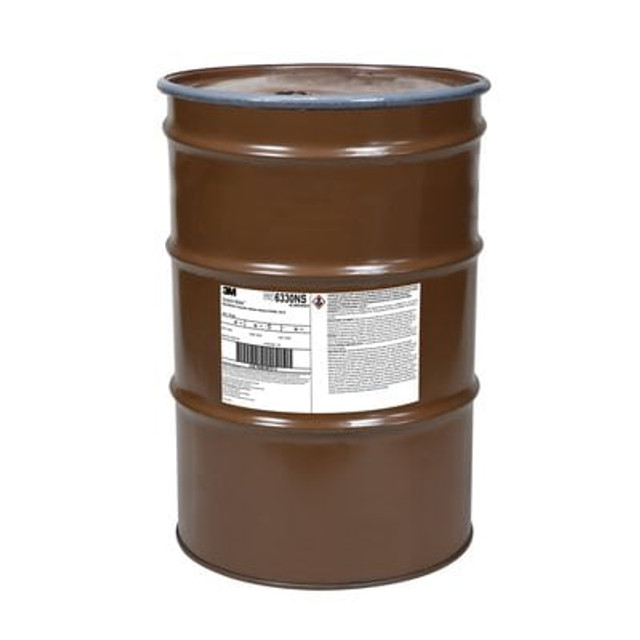
3M Products & Supplies
3M Scotch-Weld Multi-Material Composite Urethane Adhesive 6330NS, Green, Part B, 55 Gallon (50 Gallon Net), Drum
When using a Duo-Pak (DP) size adhesive, rely on 3M dispensing equipment for convenient and accurate metering, mixing and dispensing.
Bonds to Most Composites and Dissimilar Substrates
Designed specifically for multi-material and composite assemblies, our 3M Scotch-Weld Multi-Material Composite Urethane Adhesive DP6330NS delivers outstanding strength and performance. This adhesive has excellent elongation and stress strain properties for durable bonding of composite parts and multi-material assemblies, including plastics, metals and wood. With a 1:1 mix ratio, this green adhesive has a 30 minute open time and reaches handing strength in approximately 2 hours. Adhesive features excellent water and humidity resistance with very good chemical resistance.
Recommended Applications
3M Scotch-Weld Multi-Material Composite Urethane Adhesives DP6330NS can replace rivets and screws in attaching composites to other substrates, providing a more aesthetically-pleasing, fatigue-resistant bond line. It also bonds well to most metals without requiring priming.
Understanding Urethane Adhesives
Two part urethane adhesives cure chemically, rather than relying on moisture from the air. Because of this, they can cure quickly with no depth of cure issues in contrast to one-part urethane adhesive sealants. Urethane adhesives will bond most common materials such as wood, metals, rubbers, leather, tile and glass, many plastics, concrete and more.
The versatility of urethane adhesives is exhibited in the different formulations that have varying cured properties such as different levels of stiffness or flexibility, open time and cure speed, and hardness. They can cure to a relatively rigid or highly flexible state to meet a wide range of requirements. In either finished state, urethane adhesives will maintain bond strength integrity through variable environmental factors such as temperature, moisture and chemical exposure.